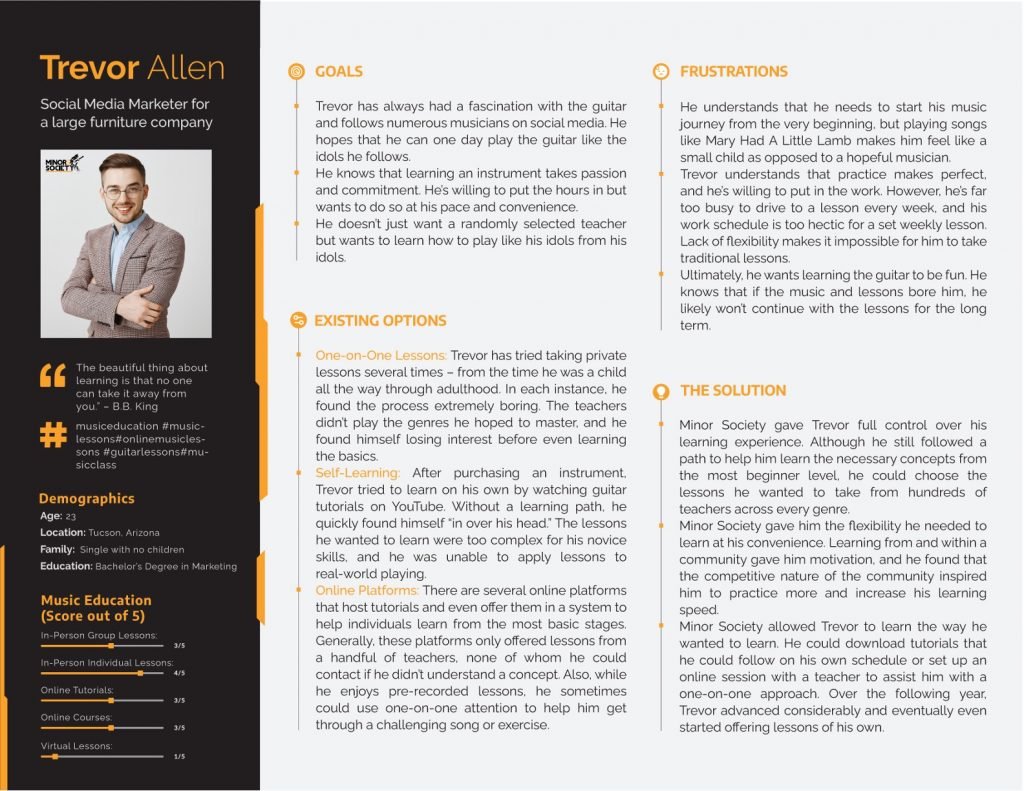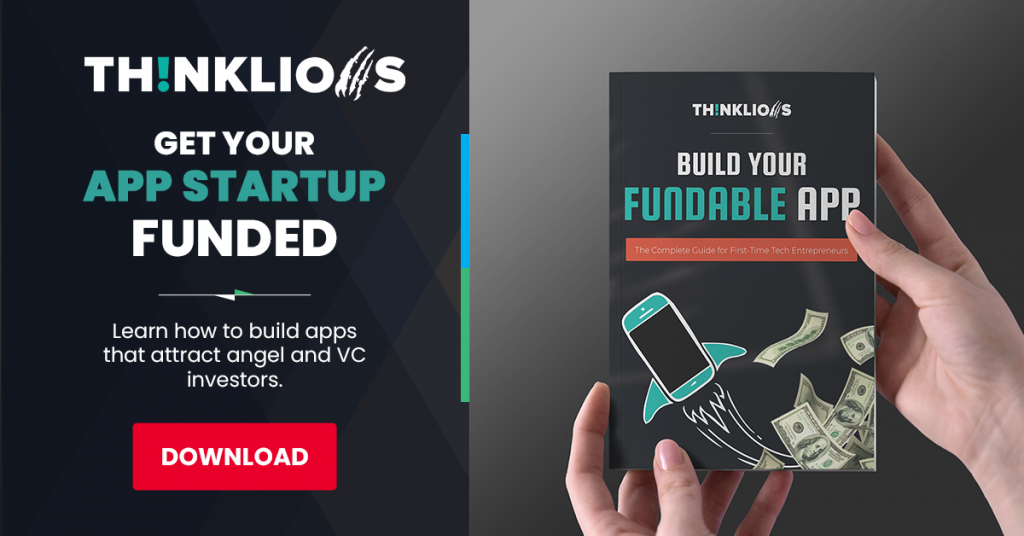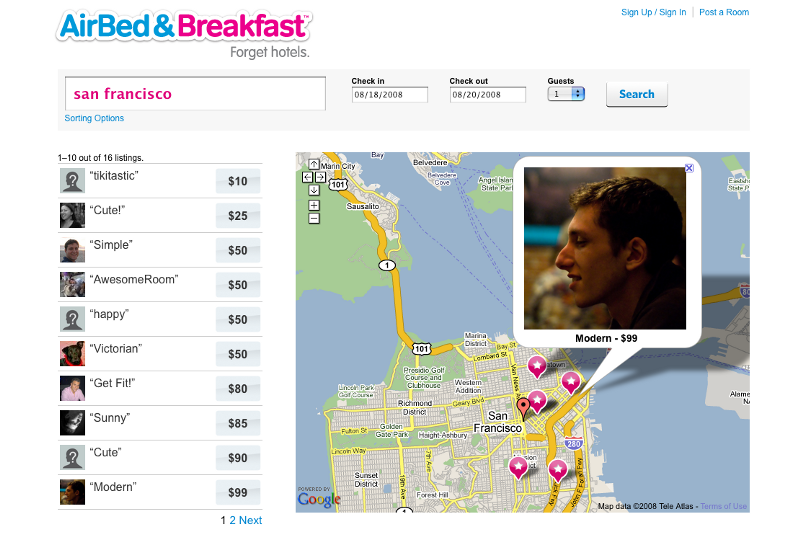Everyone has a startup idea at some point in their lives. But unfortunately, most people, even those with amazing ideas, fail to bring their vision to fruition. It’s not a lack of commitment or ability that hinders progress, but they have no clue how to launch a tech startup.
Without a process, everything is complicated. If you’ve watched a toddler trying to tie their shoe for the first time, you’ll see how impossible doing anything is without the proper process. However, launching a tech startup doesn’t have to take years. Veteran founders know how to bring new ideas to the market within months. In this article, I’ll show you how to launch a startup in 90 days or less.
The Goal of Launch
Before I show you the process, let’s ensure we’re on the same page. Until we agree on the goal, the process doesn’t matter.
First-time tech founders believe that before launching, you must build out every feature or function. But experienced founders know that they don’t even need to write a single line of code to enter the market and start earning revenue.
The goal of launching your product is not to build the perfect product. Instead, the goal is to learn exactly what customers want, create it, and introduce it to the market. In other words, your goal shouldn’t be to take years to develop some ultra-complex solution that you think your market wants – it should be to get something simple on the market and learn what the market wants.
Now that you understand the destination, let’s discuss the most appropriate route to get there. Specifically, I’ll give you a proven week-by-week schedule and explain what you need to do to build your product and get it in the customers’ hands.
Note: For more information, check out the video, “How To Launch A Startup” below.
Week 1-2: Market Research
Let’s put this in context: you’ve recognized a market problem and have an idea of how to solve it. Great. Now what?
Most people don’t know how to launch a tech startup. The majority of those with an idea will do nothing at all. They’ll keep thinking about it for years, and then one day, they find out that another brand brought their concept to the market. While they were thinking about building it, someone else was building it.
A handful of those with an idea will move forward, but most will take the riskiest route possible. They’ll hop in and start building out every feature they can think of, spending thousands of dollars to create a product without validating that customers want to buy it.
In the first two weeks, the most practical action you can take towards the progress of your tech startup is researching the market. Researching doesn’t mean just hopping on Google and searching for stats about your market and customers. Instead, during these two weeks, you’ll go out in the field, engage your audience, collect data, and validate whether a challenge exists that requires your solution. This process involves the following steps:
- Profile your ideal customer.
- Find customers to engage.
- Interview them.
- Conduct a competitive analysis.
- Assess the data and refine the concept.

Profile your ideal customer
At the core of this How to Launch A Tech Startup guide are the customers. Start your research by understanding who your customers are. Ultimately, you want to build a profile of your customer – give them a name, a personality, and a face. When you create the profile, ask yourself the following questions:
- Who are they? Look at your customer from a demographic and psychographic perspective. You should understand their lifestyles, from what they look like and where they work to how they spend their time and what things are important to them.
- Where are they? Explain where your customer lives, where they spend their time, and who they spend their time with. Maybe they reside in a specific city, study at a particular university, or attend a certain nightclub every weekend. You need to know exactly where they are because that will give you valuable insight on how to reach them.
- What are their challenges? In other words, in your customer profile, you should show that you understand the specific issues that your customer experiences. When you know their challenges, it makes it much easier to design a solution that directly solves their particular challenges.
- Where do they search for information? Some customers may look in social media groups for product recommendations, while others may search on Google to find solutions to their challenges. For example, an elderly individual seeking a new medication may talk directly with their doctor, while a younger individual might turn to medical influencers. Creating a strategic marketing plan will prove impossible if you don’t know where your customers search for information.
- Who do they trust? Likely, your customers won’t fully trust you as a new brand. However, if you can identify influencers and brands they trust, you can determine the potential partners you need to streamline brand trust in the market.
Take all this information and organize it into a detailed profile of your customer. Furthermore, if you serve several customer segments, you’ll find it most impactful to create a separate persona for each customer type.

Find customers to engage
Now, you have all the preliminary information you need to understand precisely who your customers are. The next step is to find and engage with these customers. Before you knew who your customers were, finding them was like taking a shot in the dark. However, now that you have a detailed profile of who they are, where they are, and how they search for information – locating them should be a much easier task.
Look at your contact list and determine whether anyone meets your created profile. Most entrepreneurs start businesses in industries where they are already active. If this is the case, you likely have peers with qualities that align with your customer persona. But if not, there are many other places you may look to find qualified prospects, like forums or social media groups. You may also find them offline in relevant meetup groups or social clubs.
You can learn a substantial amount about these individuals by observing them as they interact. By following the questions they ask, you can quickly identify the problems they experience. By determining who they listen to or talk about, you may get more clarity on who influences them or whose information they trust the most. Still, you’ll learn the most about them when you begin engaging them in conversations and immersing yourself in their experiences.
Interview prospects
After identifying prospects, you’ll seek to learn more about their experiences by interviewing them directly. The goal is to determine whether they have a substantial challenge that warrants a solution and whether your proposed solution adequately addresses their challenges.
Schedule an in-person or virtual interview with a dozen or so prospects. Create open-ended questions that allow you to understand the challenges in their journey, their existing solutions, and their perceived challenges with current solutions. Take notes as you conduct these interviews. Once you’ve completed your initial discussions, assess the data and see if you can find patterns in their responses. Then determine:
- Is there a substantial challenge that they face?
- Does your proposed solution effectively solve their problem?
- Are there features you can add to improve your solution?
Entrepreneurs can learn two things by interviewing their prospects. First, they may discover that they have the perfect tech solution already, which will validate their initial assumptions. However, the most likely outcome is that they find weaknesses in their initial concept. Contrary to popular belief, this is a good thing. Finding flaws ahead of time allows you to fix them, severely reducing tech startup risks and improving your value proposition.
Conduct a competitor analysis
Unfortunately, it’s not enough to just know what customers want; you also have to ensure that there aren’t other competitors in the market already solving those problems adequately. Entering a saturated market is complex, and there’s little potential for succeeding there.
For example, you might conclude that consumers want an e-commerce solution where they can find just about anything and have it shipped to their doorstep within three days. That would be a great insight for an entrepreneur. However, there’s already Amazon – and if your solution isn’t critically different or better than Amazon (which it probably isn’t), then it’s unlikely that customers will choose your solution over what’s already available to them. And even if your concept is better, what keeps Amazon from just building it themselves?
Fortunately, you’ll find all these answers when you conduct a competitor analysis. The first step to competitor analysis is to identify all of your direct competitors. Next, you will analyze each of them and determine their positioning, strengths and weaknesses, effectiveness in solving customers’ problems, and how their solution compares to your prospective solution. Here are a few qualities you should seek to expose as you analyze each competitor:
- What benefits do their products provide to customers?
- What are customers saying about their products?
- Do they have a clear value proposition?
- What are their unfair advantages?
- What do customers like and dislike about their products?
- Which methods are they using to introduce their products to and reach customers?
- Is their financial position strong?
- Are there areas where they are weak that you can capitalize on?
Assess the data and refine the concept
Market research aims to validate your concept and find areas where you can improve to maximize your potential. At this point in your journey, you should have significant data about your market, customers, and competitors.
Assess this information and record any identified insights. For example, if you find that all your prospects mention a specific problem outside of your initial assumption, then maybe you should pivot your concept to address that particular challenge better. Or, if you find that competitors are doing one thing well, but failing in another area, maybe you should pivot your concept to address the areas where their weaknesses are most prevalent.
Before you build anything, ensure that you are positioning your company correctly by conceptualizing the right products that solve a real challenge and doing it in a way that outperforms competitors.
Week 3-4: Soft MVP Development
In only 14 days, you’ve generated valuable data and applied it to your tech startup idea. As a result, you know you’re building something that people will want. But unfortunately, that’s not enough.
Unfortunately, need does not equate to action. For example, I need to buy a lawnmower. My lawn grows too fast, and the lawn service I hired rarely shows up when they are supposed to. However, I’m too lazy to mow my lawn every week. So would I actually buy a mower even though I need it? Probably not. Even if I was willing to purchase a lawnmower, there are 50 different brands out there, and with so much competition, it’s not a given that I will buy your lawnmower.
Validating Assumptions
When learning how to launch a tech startup, you must also learn how to validate assumptions. Assuming that people will buy your product is risky. You won’t know if your market will buy your product until you give them the option to buy your product.
We’re two weeks in, and we haven’t built anything yet. So how can we offer something for sale that we haven’t created yet? New and veteran entrepreneurs often differ in their market approach. New entrepreneurs build products, then sell them. On the contrary, experienced entrepreneurs sell products, then build them.
In weeks 3 and 4, you should focus on building your soft minimum viable product. At this point, you aren’t developing the product yet. Instead, you’re offering the idea of the product as an experiment to test whether customers would purchase the product – if it existed.
For startups launching a tech startup, there are two primary ways of testing customers’ purchase intent: crowdfunding platforms and landing pages.
Soft MVP: Crowdfunding Campaign
Crowdfunding has become a trendy method of funding new product development. In 2021, the global crowdfunding market size was more than $114 billion.
By definition, crowdfunding is the practice of funding a venture by raising capital from many people – generally, individuals seeking to pre-purchase the product. Numerous crowdfunding platforms exist, but Kickstarter and Indiegogo are the most popular ones today.

In terms of building a soft MVP, crowdfunding platforms enable startups to produce designs or mockups of their products, describe details of the benefits, deliver visuals of the product, and allow people to pre-order their products before they physically exist.
Pros and Cons of Crowdfunding
Launching a crowdfunding campaign can catapult your market introduction. However, this approach has both advantages and disadvantages. The benefits of crowdfunding include:
- Millions of customers frequent the platforms, giving founders a broad audience of prospects.
- Users are aware and excited about the fact that they are first adopters.
- Enables founders to market and sell pre-developed products.
However, there are also several disadvantages to launching your product using crowdfunding platforms. These disadvantages include:
- Crowdfunding is geared towards a particular type of product – software rarely gains traction.
- A successful campaign requires significant preparation and promotion to gain momentum and stand out against hundreds of other innovative products on the site.
- Crowdfunding puts time pressure on the business. Customers expect companies to deliver products on the day they promised in the campaign.
Crowdfunding serves as a minimum viable product because it enables you to experiment with the idea of your solution in the real market. If the campaign fails to generate traction, it is probably a strong indicator that your concept doesn’t resonate with the market.
However, if you succeed in meeting your fundraising goals, it can have a massive impact on your business. This benefit comes from accessing capital without giving away equity and receiving immediate brand awareness. Once customers receive the product, crowdfunding also provides social proof to make the product more attractive to other prospective buyers.
Soft MVP: Landing Pages
For concepts that don’t fit the standard mold for crowdfunding, a more practical approach to launching a soft MVP is utilizing landing pages. Through this method, you will still create designs or models of your product, and you’ll still write up content explaining the solution’s benefits. However, you will promote your product independently using a landing page. Crowdfunding and landing pages share the same goal – generating brand awareness and validating interest in your product. However, you will do it without the motivated traffic that crowdfunding campaigns provide.
How To Build a Landing Page MVP
Building a landing page today is much easier than it was in the past. There are numerous landing page builders like Unbounce and Leadpages, which also make it easy to monitor analytics related to your page. You can also buy landing page templates from sites like ThemeForest, which are customizable through basic HTML or WordPress.
On the landing page, you’ll pitch why customers should buy your product. Then, provide them with an offer to pre-purchase it. However, some entrepreneurs choose not to offer a pre-purchase option but use a shadow button. A shadow button gives the impression that a user can purchase the product, but when they click the “Buy Now” or “Checkout” button, it sends them to a “Product Unavailable” or “Coming Soon” page. While this won’t generate revenue, you can monitor how many people clicked the button and know that those people intended to buy the product – if it existed.
Week 5-6: Soft MVP Launch
Congratulations, you’ve built your first minimum viable product! But unfortunately, developing it and doing nothing else won’t get you anywhere. In the next two weeks, you’ll launch your soft MVP, market it to your target audience, and begin collecting data to validate that customers will actually purchase your product.
How to Market a Low-Fidelity MVP
There are over one billion websites on today’s internet. Considering this vast number, you won’t get a single click if you don’t have a strategy for promoting your landing page to your audience. Hundreds of millions of businesses, organizations, and individuals actively promote their websites and landing pages, and everyone is fighting for visibility.
Generally, there are two ways to promote your landing page. There is the organic (free) way, which is less effective, and the paid way, which is most effective. Likely, your strategy will incorporate both approaches.
Organic Marketing Methods
On the organic end, there are a few activities you might want to consider. Posting a link to your social media profiles may get you a few clicks, but it won’t drive significant traffic. However, you can use several other social media methods, such as joining related Facebook and LinkedIn groups and participating in relevant subreddits (Reddit). After you’ve engaged organically within these groups and provided value to the other members, you can post your landing page to introduce it to the community. The benefit of these groups is that you can surround yourself with people who directly fit your customer persona, engage deeply with them, and create brand awareness among the group.
Influencer marketing can also be impactful in driving traffic to your page. A micro-influencer is an online personality with 10,000 to 50,000 followers in a specific niche. By partnering with and hiring them to mention your business or product, you can immediately promote your page to thousands of people with the recommendation of someone they trust. This method isn’t necessarily free; likely, they will expect something in return. However, if your product is something truly innovative and impressive, you may be able to offer them future access to your problem in return for their promotion.
Paid Marketing Methods
Paid strategies will give you the most and the quickest traffic. For example, running a Google Ads campaign with a large enough budget can drive hundreds or thousands of targeted individuals to the landing page within a few days. That is, as long as you focus on the keywords and phrases your customers are actively searching. When they type in those terms, you want your page to show up, allowing them to click the link and view your offering. Since this is a paid strategy, it’ll cost you every time someone clicks on your link. The industry you’re targeting and the keywords you select will determine how little or how much you’ll spend on each click.
In addition to driving traffic to your low-fidelity MVP, this method will also show you what marketing tactics work. Then, once you launch your official product, you’ll know the most impactful strategies, and you can scale those activities to drive attention to your products.
Monitoring Data for your Low-Fidelity MVP
With a strategic marketing plan, you’ll have people coming to your page consistently. But keep in mind that the point of launching this low-fidelity MVP isn’t to just generate traffic but mainly to figure out if people would buy your product. To validate your product’s potential to attract customers and drive sales, you’ll need to pay attention to the data. A few essential metrics you should monitor and assess include (but are not limited to):
- Click-Thru Rate (CTR): The number of people that see your offer and click through to the landing page.
- Time Per Session: The length of time people spend on your page in a single session – allowing you to determine whether they read through the page or immediately leave before learning more.
- Conversion Rate: The percentage of page viewers who take action, such as downloading a lead magnet or pre-purchasing your product.
Week 7-8: High-Fidelity MVP Development
By the sixth week, you will have already learned what customers want, conceptualized a solution, and validated that customers are willing to buy it. During weeks seven and eight, focus on developing your initial high-fidelity minimum viable product. In other words, you will build your product but with the minimum amount of features necessary to provide value to early adopters.
Example: Airbnb’s MVP
Airbnb followed a similar strategy, launching with a minimum viable product. Realizing that a design conference was coming to San Francisco, the founders created a simple landing page, giving attendees a chance to rent a bed in their apartment. The price was much lower than other accommodations (like hotels) and gave a much different experience. So instead of launching a complete solution and struggling to find properties to fill the marketplace, Airbnb’s founders started with what they had – a landing page and their apartment.

Airbnb’s platform would probably cost millions of dollars to build today, but their initial MVP cost almost nothing. Through the MVP, they validated the demand and potential of their concept and even earned their first revenue.
During weeks seven and eight, you’ll take the same steps – build the simplest form of your solution that provides value to customers. Then, choose a limited market that you can promote to. Again, the goal is to get to market quickly, validate your product idea, and get the product into users’ hands. Once you collect data from those users, you can create valuable insights regarding your market, customer, and product.
Week 9-10: MVP Launch
You will launch your high-fidelity MVP in the market during weeks nine and ten. Once you introduce the product, you’ll follow the same steps you did for your soft MVP. These steps include scaling up your marketing plan, getting people to your sales page, and convincing customers to buy your product. The good news is that you should know what conversion rate to expect since you tested for conversions and collected the data during your low-fidelity MVP launch.
Week 11-12+: Build-Measure-Learn
Now, your product is on the market, and you’re making sales. But your job is just beginning. In weeks 11, 12, and beyond, you’ll continue generating customer data and insights, developing the product, and ensuring the optimal product-market fit. To accomplish this, you will implement a build-measure-learn feedback loop. During this process, you will build and launch a new feature (build), collect data and feedback (measure), and use that data to make insights on whether you have created the right thing (learn).
Some of today’s fastest-growing startups utilize the build-measure-learn feedback loop. For instance, Facebook started with straightforward profiles and targeted a single market – students at Harvard. After validating their initial idea, they added new features like the news feed and messenger, tested them, and decided whether to keep them or pivot.
Some features, like virtual gifts, didn’t last. Facebook launched them, tested them, and learned that customers weren’t fond of those features, so they ditched them. Likewise, you might ditch some ideas as you build up your product. Some you’ll keep – but only after validating that customers actually want them.
How To Launch A Tech Startup: Key Takeaway
You’re only 90 days from launching your startup, but you have to start small and build your way up using data from genuine customers. At this point, you have a product on the market, you’re generating traction, and you’ve validated demand for your product. You know how to launch a tech startup, and you’ve proven it through your actions. Now, you can start seeking investment to scale your product and business. For this, you’ll need a fantastic pitch deck and business plan – and we can help! Contact us today and learn how we’ve helped hundreds of startups grow their businesses and achieve their fundraising goals.








